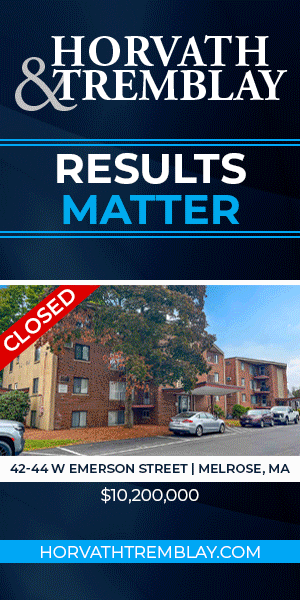Putting the Boston Sublease Problem in Perspective
January 22, 2021 - By Garrett Larivee, Executive Vice President, McCall & Almy
BOSTON - For those in the CRE business, the early November headline from the Wall Street Journal was an ominous sign. “Corporate Tenants Dump Excess Office Space, Sending Shivers Through the Market,” it blared, confirming the fears of many. The text of the article was equally bleak, as CoStar reported that tenants had put a record 42 million square feet of sublease space on the office market in the second and third quarters, increasing the total in the U.S. to roughly 157 million square feet – 1.7 percent of the total U.S. office inventory.
In Boston, nearly four million square feet of sublease space has been placed on the market, including over one million square feet of office space in Cambridge, one of the tightest markets in the nation in recent years. But while the numbers alone paint a disheartening picture and may be a harbinger of longer-term issues, it is worth noting that this sublease space’s sheer volume does not necessarily create the immediate wealth of opportunities for all tenants that one might expect.
Let’s start with some financial perspective. Although it may take years for the Boston office market to return to pre-COVID rent and occupancy levels even under the best-case scenario, from a balance sheet perspective, the immediate impact is not really being felt by either landlords or tenants. At least not yet. Even with approximately 80 percent of office employees currently working from home, tenants continue (and are obligated) to pay rent. As we have learned through our conversations with landlords and from published reports, 90-95 percent of tenants are still meeting their rental obligations. The uninterrupted cash flow means that building owners are still making their loan payments, with CMBS tracker Trepp reporting that through mid-October, delinquencies on office CMBS loans were still at 2.5 percent compared to 14.3 percent for retail and 19.4 percent for hotel properties.
In addition, the vast majority of lease expirations aren’t coming due in the near term, and subleases that have expirations in 2022 or 2023 may have limited appeal, particularly for users with large space requirements. Despite the allure of the discount in rent, which could be as much as 20-40 percent less than a direct lease, we believe that most tenants are not going to want to relocate to these short-term solutions, knowing that they would likely have to make another move in 18 months or two years. Similarly, corporate tenants with longer-term agreements looking to shed space to companies seeking a full floor may find a marketplace tentative to commit long-term because the jury is still out on what the “future workplace” will look like. However, there is a sweet spot where term length (not too short, not too long) and confidence in space needs come together. Currently, companies able to take advantage of these attractive sublease deals are few in number.
Another consideration is demand. Tech companies – which drove much of the growth in the Boston CBD over the last five years – are adjusting well to work from home (WFH) culture, and many have no immediate plans to return to the office, so they aren’t active in the market. Given the uncertainty of future workplace strategy and space needs, companies that don’t need to make a decision on a renewal or relocation right away are postponing action for as long as possible. And tenants with expiring leases are seeking short-term extensions from their landlords.
Interestingly, tenants with smaller requirements that are nimble enough to take advantage of the sublease space discounts are having a difficult time finding deals. It has been our experience that there is a shortage of available opportunities for tenants seeking space in the 3,000 to 5,000 square foot range. The smaller the company, the easier to manage a return-to-work plan during the pandemic. So, these smaller companies have not felt the same desire to offload their space as compared to larger companies where return-to-work plans are much harder to implement. And some large occupiers with excess space are reluctant to carve out smaller spaces to accommodate a sublease tenant (creating a separate entrance, security, operating expenses, etc.), as it may not justify the investment.
Another consideration is that while COVID-19 has wreaked havoc on a grand scale in terms of lives lost and the devastation to the economy, there are signs of hope that we will return some semblance of normalcy, as the vaccine rollout provides us with a light at the end of the tunnel. It is reasonable to expect that while some companies will choose this summer or early fall to bring some people back, the greater migration back to the office will not occur until Q4 or early 2022 (assuming all goes well with the vaccination process). While the timing of the return is being considered, company executives and their real estate advisors are also strategizing on how the office will be used upon the return. A WFH/office hybrid would seem to be a given, so we anticipate that as the lease expiration is nearing, a tenant currently occupying 10,000 square feet may find they are better off reducing their office footprint to 7,000 square feet.
While the sheer volume of sublease space that has hit the office market has grabbed headlines, the impact of this “cheaper” alternative versus direct landlord leases has not yet been realized. It is unlikely to be significant in the near term. The future workplace is still being reimagined, and it may be many months – or even years post-vaccine – for that future workplace to take advantage of the increase in quality options.
 200 State Street, Boston
200 State Street, Boston

.gif?mtime=1757534141)



